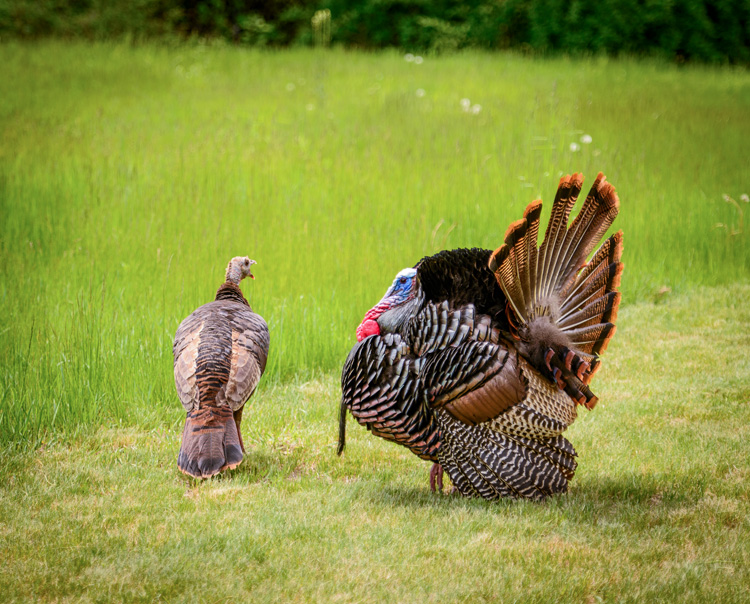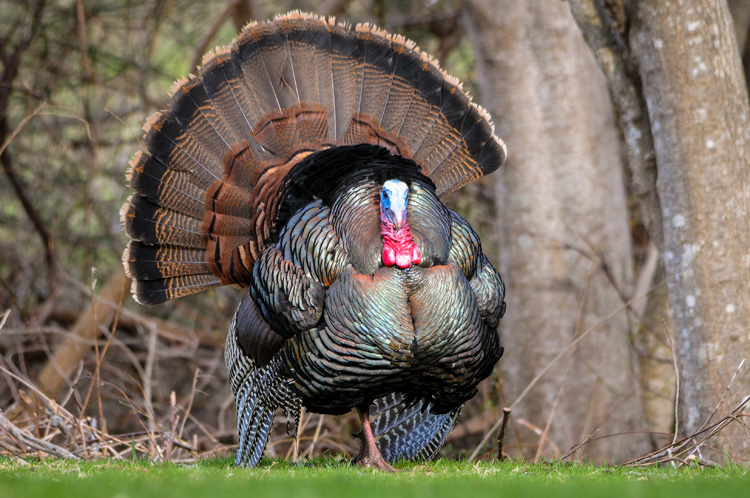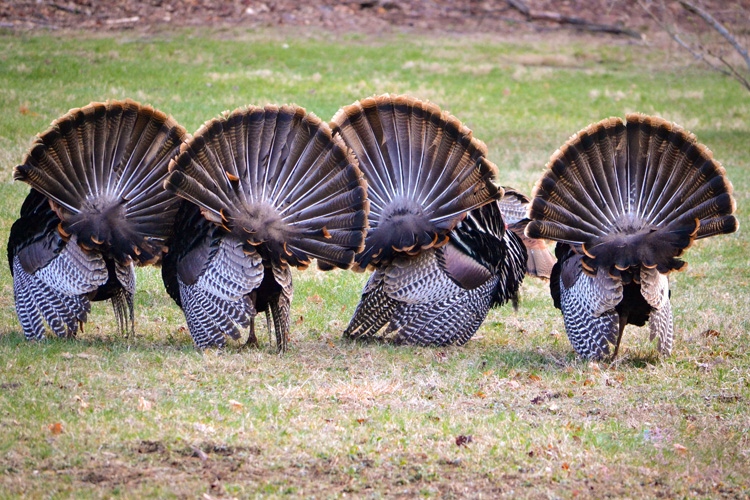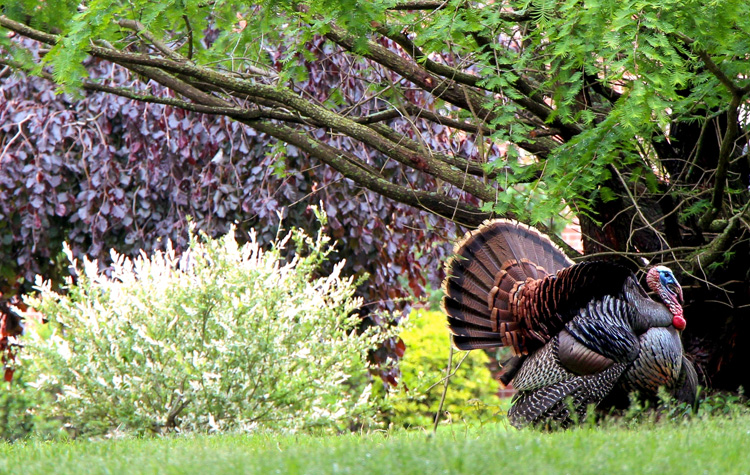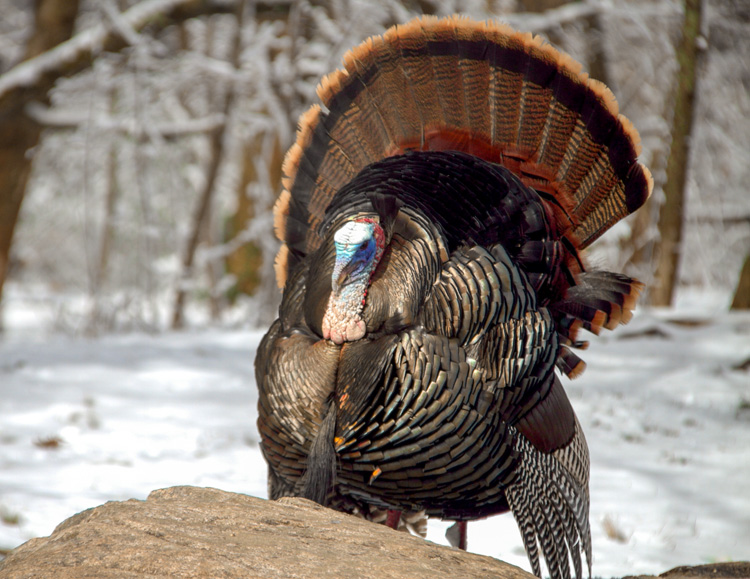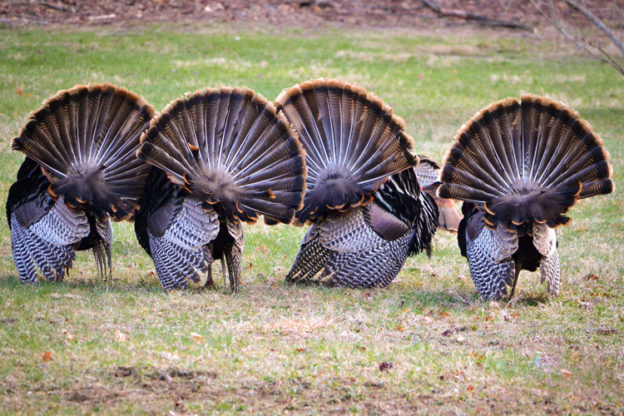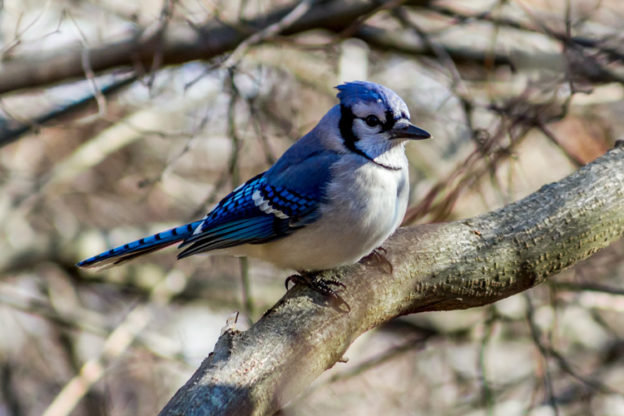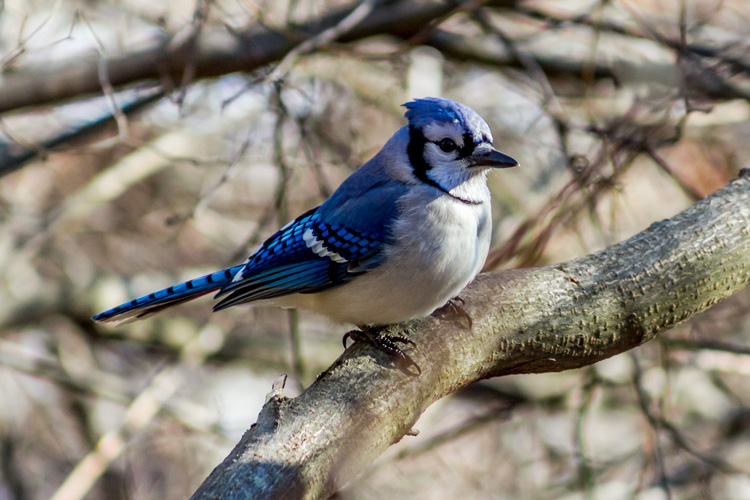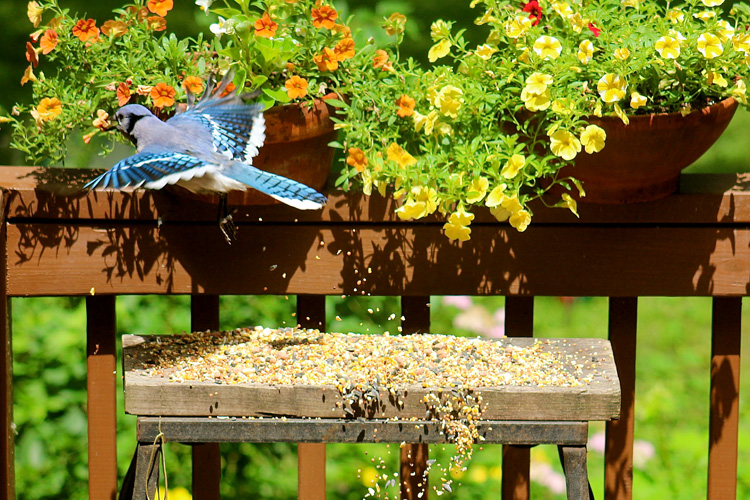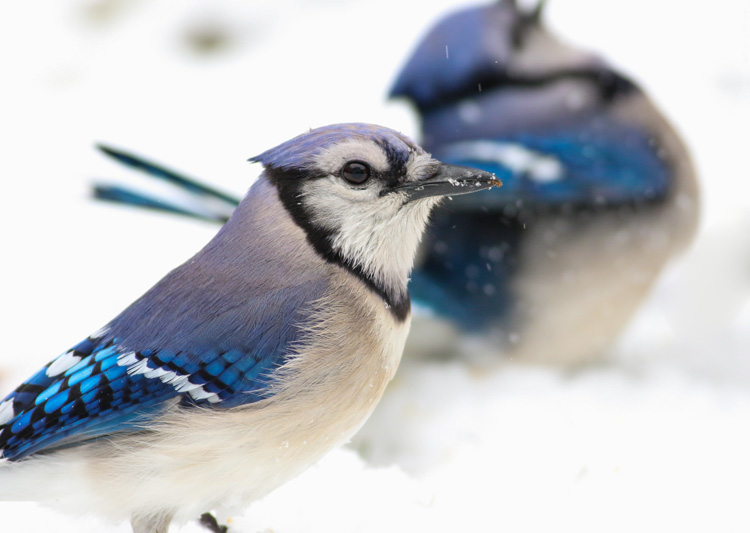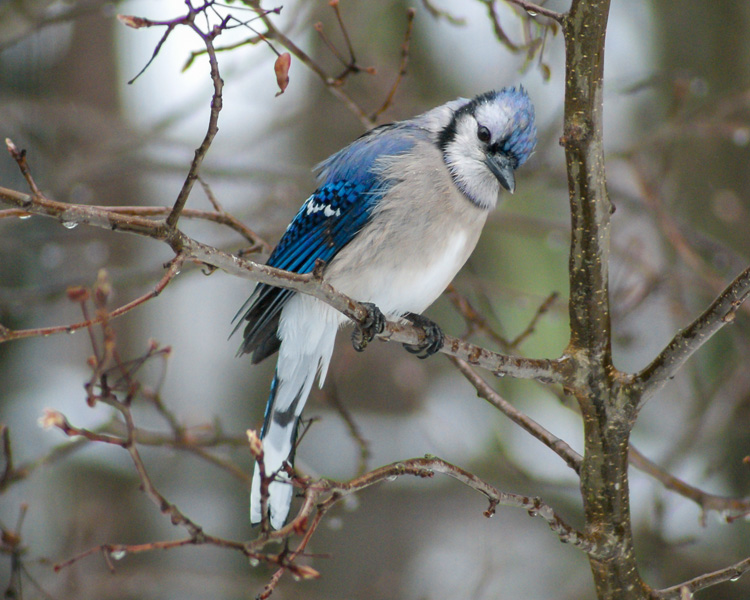As you may be dining on plenty of turkey this week, we thought we’d turn our attention away from the domesticated variety that graces many a Thanksgiving table, and instead “show off” that iconic show-off, the Wild Turkey.
Wild Turkey can stand four feet tall, with a large, bulky body covered with bronzy, iridescent feathers. The tom (male) has a reddish-blue head and a hair-like “beard” protruding from his breast. The smaller female is duller in coloration than the male.
In the spring, tom turkeys make their famous gobble in order to lure in females. Courtship begins when the tom spreads its tail, fluffs out its feathers, swells out the facial wattles, and struts in front of the females. This elaborate dance may be entertaining for us, but the (turkey) ladies love it! Males are polygamous and will mate with several females if given the opportunity.
Want to impress your family with a few $5 words this Turkey Day? Brush up on your turkey vocabulary with our handy guide to Wild Turkey Terminology. And enjoy these five photos of toms strutting their stuff for the ladies, all submitted to our annual Picture This: Your Great Outdoors photo contest.
